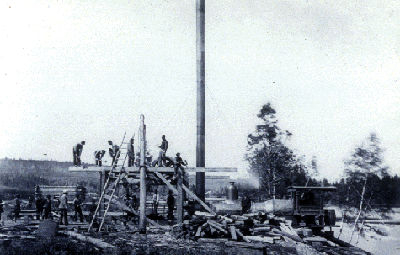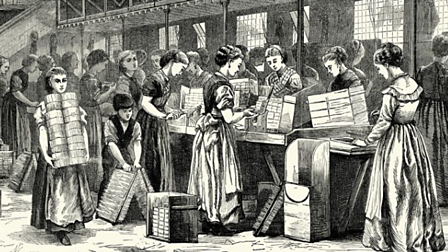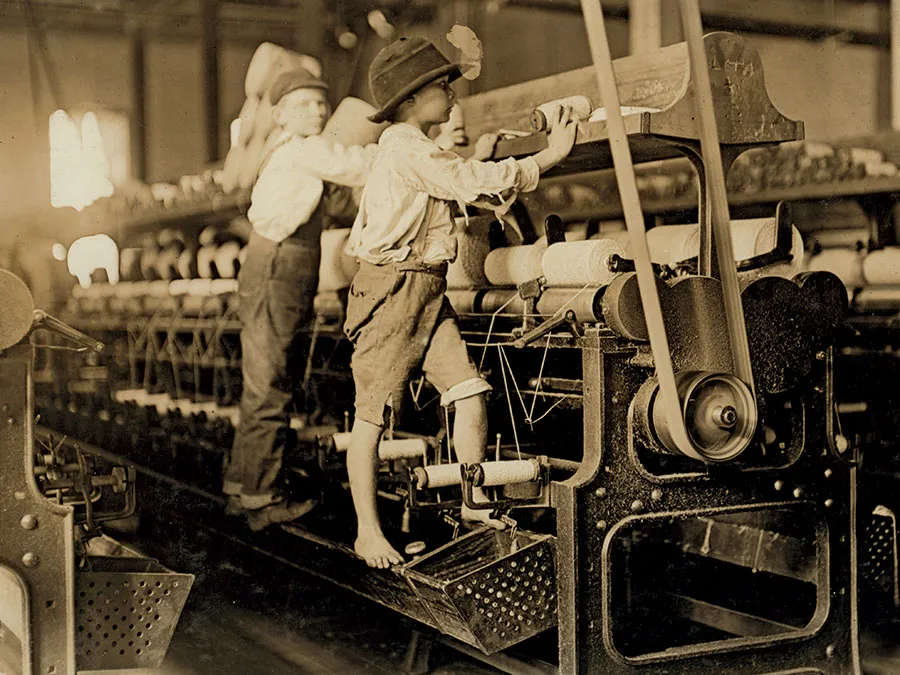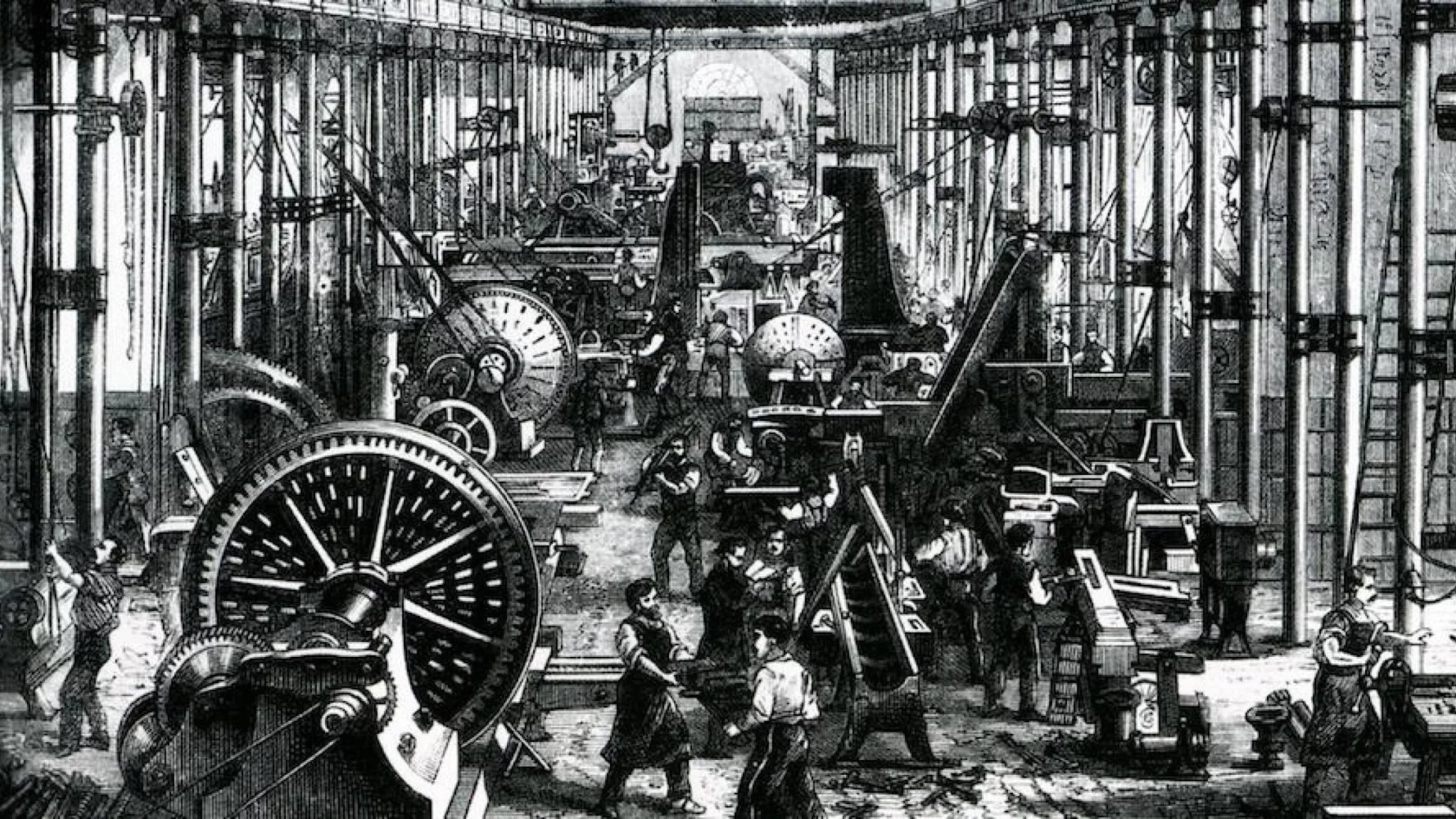The Industrial Revolution was a period of technological innovation that swept over Europe and North America in 1750.

It was characterized by more efficient means of production. Though this period mainly affected manufacturing processes, it also had massive cultural and societal implications. People stopped working on farms in the countryside. This resulted in large-scale migration of individuals into cities to work in factories. This conglomeration brought a plethora of different individuals with different cultural and societal values into an area of proximity to each other. Housing projects began to spring up in the surrounding city areas. These projects were started by bureaucratic elites who sought to gain a profit.
Because quality and sanitation were poor, many diseases became rampant. Additionally, working conditions in the factories were sub-standard. These individuals’ lives began to grow increasingly similar as their daily schedules became more and more structured by the requirements of their jobs. Technological innovation, mass migration, and the restructuring of daily life gave rise to mass society, mass culture, and mass media.
The Industrial Revolution began in Europe in 1750 with the transformation of the textile industry. Before this period, the vast majority of industries used inefficient means of production. A major reason for this was the shift from relying on hand production to machinery production. With the expansion of machine tools and the growth of the mechanized factory system, there was a steady migration of individuals into cities. These individuals began to work in factories. Because of this, the output of goods greatly expanded. As a result, essential items such as tools, clothes, and food became much more affordable.

The second feature to note about this historical period was the conglomeration of individuals from the countryside into the city. The population shift happened because individuals shifted from working on farms to working in factories in the city. Though there was increased productivity and economic growth, poor working conditions and environmental degradation became rampant. Because of the influx of individuals into the city, residential housing products sprang up. However, these housing projects were very poorly built with inadequate ventilation and insulation.
Many rich factory owners and business magnates built these homes for their workers. However, they cared only for monetary increases and disregarded the quality of these homes. These projects were erected very hastily and in extreme proximity to one another. As a result, overcrowding became a serious issue. Additionally, sanitary conditions were horrendous with human waste being discarded onto the streets. The combination of poor sanitary and living conditions soon caused diseases to spread. Working conditions were also poor. Workspaces were crowded and cramped. Shifts were incredibly long and monetary reimbursement was inadequate. Workers became burned out incredibly quickly.

The third feature of this feature was the similarity of daily life for individuals. Because they all worked similar jobs, factory owners were able to structure the daily lives of their workers to maximize profit for themselves. As a result, individual autonomy decreased and the relationship between factory owner and factory worker was akin to that of slave and master. Daily life became extremely regimented for people.
The unique aspects of individuals began to disappear as they began to embrace similar lifestyles, opinions, and cultural values. Social, political, and economic institutions also began to become prominent. The bureaucratic few that obtained power at the head of these organizations began to increase their wealth and influence. The masses experienced limited freedom and autonomy. Mass Media became widespread. There were much less people who were expressing their opinions as opposed to receiving them. Society evolved into a ball of people who received opinions and impressions from the media. Thus, “free thinking” was reduced resulting in “group thinking” about culture, society, and media.
The Industrial Revolution was the catalyst for the revolutionization of many positive aspects of our daily lives. The massive shift from hand production to mechanization processes caused many individuals to move to cities in pursuit of factory work. This led to compacted living conditions. The lives of these individuals became increasingly structured and similar because of the demands placed on them by the factory owners. Consequently, the autonomy of these individuals gradually diminished. Ultimately, people began to embrace the same cultural and societal norms.

Technological innovation, conglomeration of individuals, and restructuring of daily lives were the causes of the rise of mass media, mass culture, and mass media. These prominent features of the Industrial Revolution are responsible for many of the “ills” caused by the modern 21st century. They are causing our society to become beguiled by the influence of “mass” everything. Our general autonomy as individuals is decreasing as we begin to become programmed by watching more and more television, scrolling through social media, and tuning in to mass media. We must be careful not to be “controlled” by the elites of our modern society, like how factory workers were “controlled” during the Industrial Revolution.


